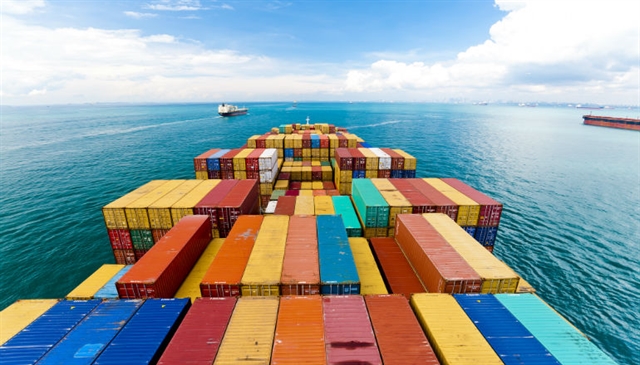
HCM CITY — Sea freight rates continue to escalate as they track petroleum prices, pushing up export costs and thus reducing the competitiveness of Vietnamese goods, according to businesses.
A report by the Association of Seafood Exporters and Producers (VASEP) said foreign shipping lines had increased freight by two or three times and even six to seven times on some routes.
Besides, businesses also had difficulty with booking containers, the association said.
Prices have soared to US$1,600-2,500 per container for shipping to ports in Thailand and the Philippines, $12,000-14,000 to the west coast of the US and $19,000-22,000 to east coast ports such as Baltimore, Miami, New Orleans, and Houston.
Following the surge in oil prices, road transport operators have also increased tariffs.
Shipping companies also blame the lack of containers and the impacts of the Russia-Ukraine war for the rising freight rates.
Many businesses have also expressed concern about HCM City collecting fees on seaport infrastructure from April 1, which will further increase costs and erode the country’s export competitiveness.
According to TMX, the leading business transformation consultancy in the Asia-Pacific, the shortage of containers, especially in the southern region, has significantly impacted Việt Nam’s exports.
Lê Thị Kim Thúy, TMX’s client engagement director, said the country’s inability to produce containers worsened the problem. In the past there had been a number of domestic enterprises looking to invest in building their own containers, but this proved to be ineffective as most of them lacked resources for structural accessories, she said.
So Vietnamese enterprises needed to make resourceful use of the containers available and prevent unequal distribution with some areas having a surplus and others facing a shortage, she said.
Technology-based solutions and early forecasting of supply and demand are also important factors that should be considered, she added.
Thuý said the surge in demand and lack of air freight capacity had put incredible strain on shipping lines, with more than 90 per cent of the global fleet being utilised to service the current demand.
“Many containers are being shipped at huge premiums, significantly impacting Vietnamese businesses.”
Businesses that could afford to ship were reluctantly passing on the costs to customers or simply absorbing the losses to stay afloat, while those that could not sustain the losses were not shipping as much or in some cases not at all, losing valuable market share, she said.
“The undersupply in the ocean freight market is only expected to continue,” she added.
While shippers have been beneficiaries, generating high revenues and using this opportunity to diversify their service offerings, it is putting a strain on their commercial relationships.
FMCG businesses in Việt Nam must seek better contracts and partnerships with their logistics service providers to secure space and prioritisation in a hotly contested market, Thúy said.
Besides, businesses needed to invest in integrated technology solutions that would enable more effective planning, management of their supply chain and optimisation of costs, service and compliance across their international and domestic value chains, she said.
Last-mile logistics
According to TMX, the increased demand in the domestic market has naturally placed great strain on last-mile logistics networks.
The shift to higher frequency, smaller orders and the overwhelming increase in customer demand during the Tết holidays led to manual systems struggling to keep up with the surging consumer demand.
Companies are now looking to innovate by utilising automation, and those that are not doing so are being left behind.
Many businesses invested in digitising their processes during the pandemic to optimise operations, reduce costs, improve compliance, and better service customers.
Many made advancements in their transport management systems, warehouse management systems and general process automation solutions to enable improved end-to-end visibility in their supply chains.
These technologies enable businesses to make informed data-backed decisions based on real-time analytics and offer customers timely updates on the delivery of their products.
Thúy said while the global supply chain and shipping issues worsened in 2021, in 2022 and beyond these issues would not be anything new for FMCG businesses in Việt Nam.
Even with COVID evolving constantly, businesses had experienced all these shipping, infrastructure, last-mile, and industrial-action issues before and had learnt a lot along the way, she said.
These conditions had created an environment where automation would be increasingly necessary. — VnExpress News
- Reduce Hair Loss with PURA D’OR Gold Label Shampoo
- Castor Oil Has Made a “Huge” Difference With Hair and Brow Growth
- Excessive hair loss in men: Signs of illness that cannot be subjective
- Dịch Vụ SEO Website ở Los Angeles, CA: đưa trang web doanh nghiệp bạn lên top Google
- Nails Salon Sierra Madre
 VnExpress News The News Gateway of Vietnam
VnExpress News The News Gateway of Vietnam




